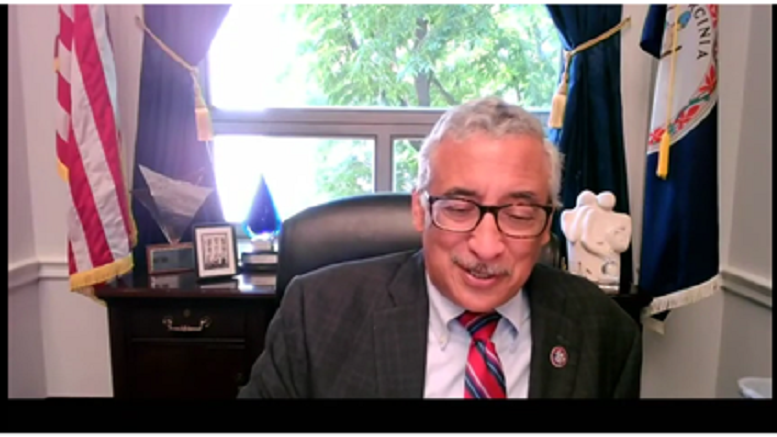The House Committee on Education and Labor met today to discuss the tenets of “Building Back Better: Investing in Improving Schools, Creating Jobs, and Strengthening Families and Our Economy.”
“We cannot ignore the ongoing risks that this pandemic is posing for students and workers,” Committee Chair Rep. Bobby Scott (D-Virginia) said in his opening statement. He went on to note that “millions of displaced workers remain unemployed without the skills needed to find good-paying jobs; schools are unable to ensure the safety of students and staff due to hazardous and outdated facilities; families are finding it even more difficult to find safe and affordable child care; and the rising cost of higher education continues to restrict opportunities for countless students.”
The discussion focused on many elements of President Joe Biden’s American Families Plan, including free community college tuition, support for workforce and infrastructure for community colleges and apprenticeships.
The American Association of Community Colleges (AACC) supports the American Families Plan proposal.
In a statement, AACC President and CEO Walter Bumphus said that the plan “invests in strengthening the nation’s middle class and targeting barriers to college completion.”
“Inequities in college attendance and completion are pervasive among low-income and students of color, and community colleges serve higher percentages of these students than any sector of higher education,” Bumphus said. “By targeting support on these students, the American Families Plan will help eliminate longstanding attainment gaps.”
The committee hearing also included discussion about the American Jobs Plan, which Biden unveiled last month. The plan proposes a range of investments to improve the infrastructure of the nation’s child care centers, schools and workforce. This plan invests in chronically underfunded public workforce systems by providing $100 billion for apprenticeships, pre-apprenticeships, sector-based training and programs to help displaced workers build the skills for new careers. It ensures a more equitable recovery for workers with barriers to employment by expanding re-entry programs and subsidizing employment, especially for disconnected youth.
Testimony was provided by several stakeholders, including Portland Community College President Mark Mitsui who likened community colleges to the bridge between skill seekers, education and jobs, and noted that support was needed to ensure that high-tech jobs require high-tech training, which can be prohibitively expensive.
Mitsui told committee members that “by investing in the students who cross the bridge, and by investing in the bridge itself, we can help keep America on the forefront of the world economy and create a more equitable recovery.”
Concerns and other comments
But it wasn’t all positive. Ranking Member Rep. Virginia Foxx (R-North Carolina) expressed concerns about “underwhelming” student outcomes despite a marked increase in federal support of education as well as noting that “free college” would only drive up the costs of tuition.
Others noted that the cost of the president’s proposal would increase the national debt by trillions of dollars and that free community college, while well-intended, would not equate to better outcomes for students. Brian Riedl, a senior fellow in budget, tax and economic policy at the Manhattan Institute for Policy Research said that proposal “would be the most expensive non-emergency law in half of a century [and] is fiscally irresponsible given America’s daunting federal budget outlook.”
Bob Lanter, executive director of the California Workforce Association, supports efforts to invest in economic growth, saying that the American Jobs Plan “would set our country on a sustainable, equitable path out of this severe economic disruption” and would “accelerate the recovery.” Lanter noted that investing in workforce development that leverages existing cross-sector partnerships will be critical to addressing skills gaps and filling the workforce. Specifically, he noted that scaling registered apprenticeships will be beneficial to the workforce development system, as well as to employers and participants.

